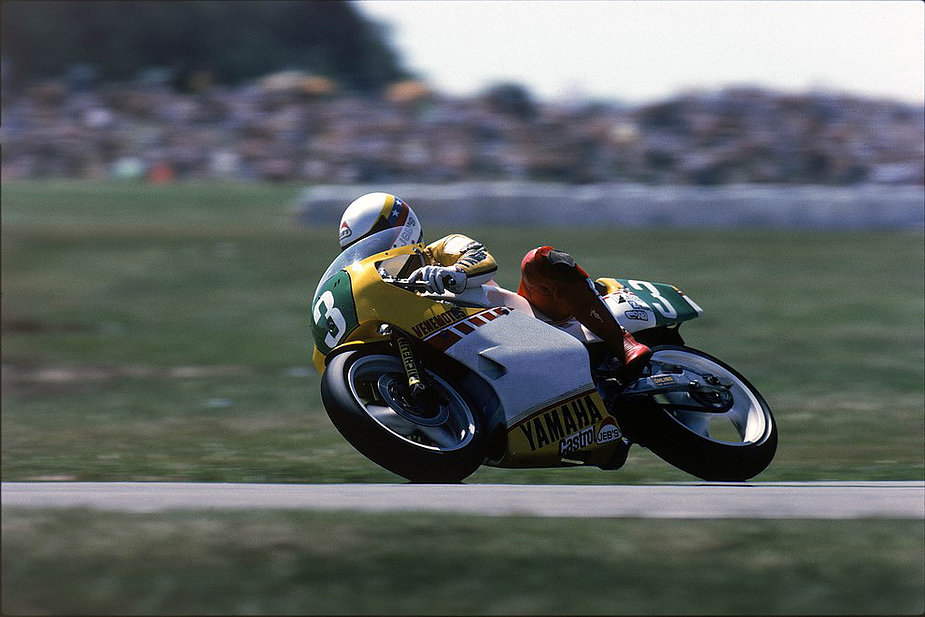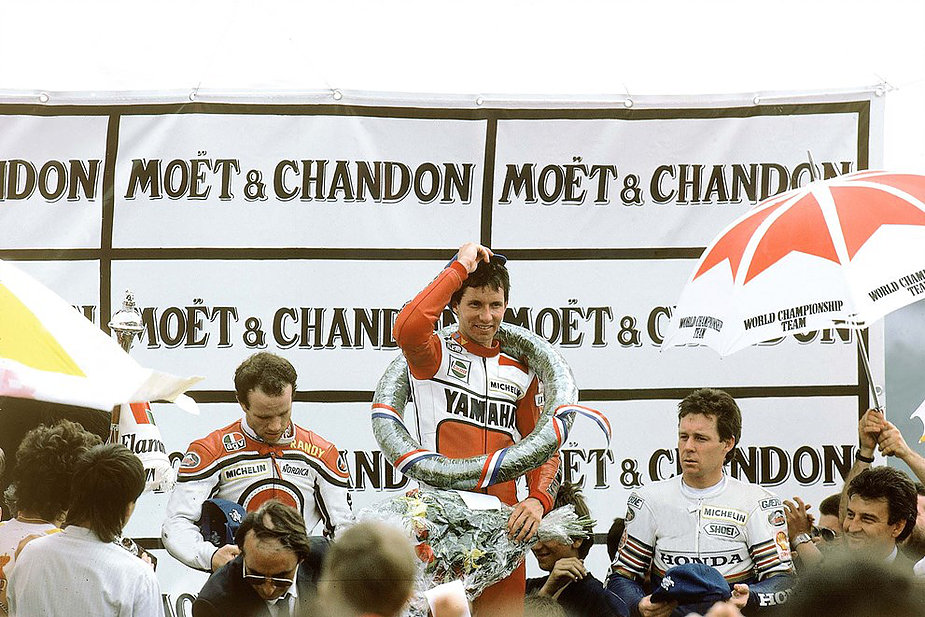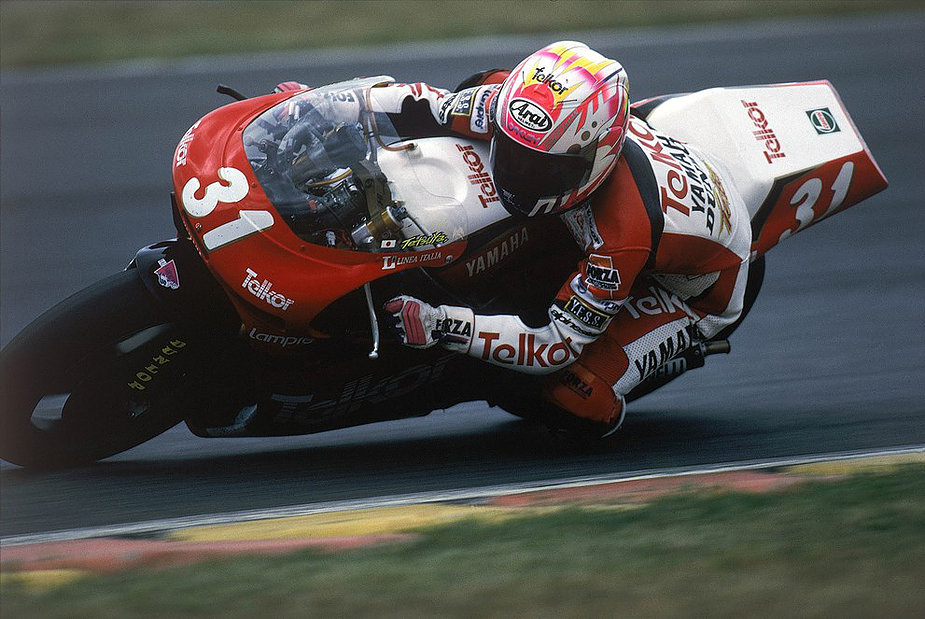MotoGP is where the very best of the best race against each other for the most coveted prize in the whole of motorcycle racing: The MotoGP World Championship. However, I have noticed a recent trend, that isn’t really that recent; Spain and Italy are dominating the top spots in MotoGP. Is this the start of something bigger, or is this the end of their reign? Is there going to be any riders in the future representing countries in Asia in the masses that Spain and Italy are now? There’s a lot of questions and I’m going to answer them.
Valentino Rossi, Andrea Iannone, Andrea Dovizioso, Danilo Petrucci and Michele Pirro. Five Italians that currently race in the top level of motorcycle racing. To me, this is OK if you have earned your right to be there, which they all have in their own ways. But what I want to know is what really keeps them in the paddock because I’m fairly sure I am not the only one who thinks that there are other factors involved. Sponsorship is a main reason. Valentino Rossi brings massive money to Yamaha. When he left them in 2010, the title sponsors left too; a year after his return and the they return. But is this capitalist outlook ruining the championship? I’d like to say ‘yes’.
The same thing is happening with Spain. I won’t list the riders because that may take some time but there are more Spaniards than Italians on the grid. This could be down to sponsors, particularly when it comes down to Repsol Honda wanting two Spanish riders but I believe this is something even bigger. Dorna. The Barcelona based MotoGP owners have really bought a Spanish feel to the championship but is it too much? Four Spanish races, nine Spanish riders, four Spanish sponsored teams and two Spanish based teams; it’s a hell of a lot and if you were a country looking in you may think that it is totally impossible to try and get a new race on the calendar or to try and help the riders from that country develop. The championship has almost lost its world feel to it, not in sense of tracks but in sense of the line-up. The focus on European riders has absolutely crushed the chances of young talent from outside of Europe getting in. Or has it?
Just one Frenchman on the grid this year in the name of Loris Baz, the former World Superbike race winner and title contender. With all due respect to Loris however, he isn’t threatening the top five because no big team will invest in him because all the sponsors have control over which rider goes where. However, this isn’t a recent thing either, there has been a serious lack of French riders in the top class ever since Randy De Puniet went to Pramac Ducati in 2011. The last French winner in the premier class was way back in 1999 when good ol’ Regis Laconi stormed to his first and only win at the brand new Ricardo Tormo circuit. Before that it was Christian Sarron in 1985 and the dauntingly fast Hockenheimring! The last French top class podium was De Puniet at Donington Park in 2009; these are stats that really shouldn’t be read out! However, France has an advantage over countries that are only just getting into the sport: Le Mans. The historical home of the French Grand Prix is still on the calendar and therefore France is still connected to the championship. There is another distinct difference in the paddock too. In 2015, Frenchman Johann Zarco set records on his way to his 1st title, Alexis Masbou won in Qatar at the start of the year and Fabio Quartararo had some stunning rides, so France is slowly but surely getting back into the groove, maybe not in the same numbers as the Italians and Spaniards but it’s a groove nonetheless.
Something that has gone missing in the championship is the noticeable lack of fast, competitive Americans and Australians who are up the front winning races. It’s ten years since the last American GP winner which was Nicky Hayden and there hasn’t been an Australian title threat since Casey Stoner in 2012, despite Jack Miller winning at Assen this year. Once upon a time you couldn’t move for fast Americans and Australians, similar to Italians and Spaniards today. Doohan, Gardner, Magee, Beattie, Rainey, Schwantz, Kocinski, Spencer, Chandler, Lawson, Mamola, Roberts, Russell the list could go on for hours on end. Now, not one American in the whole paddock and just one Australian in the top class in the name of Jack Miller. Again, I put this down to the obsession from Dorna to get Europeans in the paddock. It’s almost like the whole paddock has been brainwashed into believing it’s Europe or nothing. And this is evident in the lower ranks too. Not one Australian is a full time rider anywhere else in the paddock. Remy Gardner is competing in the CEV Moto2 Championship and is doing a sterling job too but apart from that, I am struggling to see where the next Casey Stoner is coming from. I don’t want to see an Australian on the grid for the sake of it, I want to see them winning races and battling it out in the top five. Josh Brookes is a fast rider but he has already made his bed in Superbikes and the gap between the two series has never been so big and so hard to make a successful jump. Josh’ age isn’t on his side either and that isn’t appealing to the team owners. As for Americans, they are creeping back. James ‘Rocket’ Rispoli is a real crowd pleaser and is more than capable of making the switch whilst he’s still young and PJ Jacobsen is a top runner in World Supersport and the most likely in the future to bring success to the USA again.
However, this is where everything starts to change because there is one part of the world that is producing riders like China produces toys and it isn’t Europe this time; it’s Asia. Ratthapark Wilairot has got to be hailed as a legend for representing Thailand on the world stage. He has really set an example to the talent that is coming up from the Far East. Thailand is having a real boom of riders and another rider you can thank for that is Tadayuki Okada. The Honda Team Asia set up is designed to give riders from Asia the chance to shine on the world stage and it hasn’t half worked a treat! Khairul Idham Pawi, a quiet Malaysian lad who contested in the CEV and Red Bull Rookies in 2015 took his and Malaysia’s first ever MotoGP win in Argentina in only his second race this year. He should have been followed home by Adam Norrodin, also Malaysian but he crashed out heartbreakingly at the final corner on the final lap. In the CEV, there are four Honda Team Asia Junior riders; Kaito Toba, Nakarin Atiratphuvapat, Kazuki Masaki and Ayumu Sasaki are all front runners as proven at the latest round at Catalunya. The reason these guys can go far is that thw Honda Team Asia set up has got roots going all the way up to Moto2, where Nakagami and Wilairot ride now. Getting onto the world stage could be the biggest break that they have and it could mean that in the next five years, we will see the first Thai world champion or even see Japan back on the top step in the premier class. You may think that is an over exaggeration but it really isn’t. Look at all the stars that have come through CEV. In 2010, Maverick Vinales won it. Seven years later he will be riding on a Factory Yamaha in the MotoGP class.
Now, where else is getting a bit more involved in motorcycling? South America is the answer. Yonny Hernandez is the only South American in MotoGP but that could all change soon. In the CEV Superbike class, Max Scheib is the current series leader. The Chilean is aged just 21 and is winning races against the Spanish equivalent of Shane Byrne: Carmelo Morales. If Scheib could make the transition over to the Grand Prix paddock quick enough then he could be the next big thing and the reason that Chile gets involved with MotoGP even more than it does now. In the CEV Moto2 class, Eric Granado, the former World Moto2 rider is winning races and also closing down the series leader Steven Odendaal. He, for my personal liking, was thrown into Moto2 way too young and now he has been given the chance to mature in the CEV, he could be one to keep an eye on in the future. Steward Garcia in the Red Bull rookies is also on course for doing magical things and at just 16 years old, he has got a long time to mature and become a great rider. Gabriel Rodrigo in Moto3 has been getting faster and faster all the time too. He looked in contention for a podium up until he crashed out at turn one at the Catalan Grand Prix.
There is one other area of the world that is starting to flag up on my radar. Kazakhstan. “Where”? I hear you all ask in a high pitch shriek. Yes, this Central Asian country is putting a bid in to host a Grand Prix in 2017! However, they have also got a very good young talent coming through who caught my eye when I started watching the CEV Moto3 championship earlier this year. Makar Iurchenko was originally born in St. Petersburg in Russia but represents Kazakhstan when riding. A country that nobody has ever associated with bike racing is quickly becoming a real economic hub for that part of the world. A bustling, glamourous capital city of Astana, MotoGP could be very interested in going there in the not too distant future.
Back to Europe now but not to Italy or Spain or even good old Blighty, carry on going North until you hit countries such as Norway, Sweden and Finland. Finland has been involved in MotoGP for a long time now with past riders like Jarno Saarinen and KTM’s current test rider Mika Kallio. Moto3 KTM boss Aki Ajo is Finnish. However, Sweden has kind of disappeared from MotoGP. It lasted hosted a grand prix 26 years ago, a race that Wayne Rainey won in the 500cc class, Carlos Cardus in the 250s and Hans Spaan in the 125cc category. Sweden has a former double champion of the 125cc class in Kent Anderson. Here’s a few names some of you may remember. Peter Linden, Bo Granath and Ivan Carlsson. Yes, all Swedish and all very, very successful. Sweden is coming back though, Alexander Lundh is racing for Sweden but I noticed that again, in the CEV, a Swedish flag was waving. Johnny Rotvik and Pontus Duerlund may not be right at the sharp end of the championship but they are representing Sweden and that is a start. Did you know that for the last Swedish win you have to go back all the way to 1975 and Leif Gustafsson on a Yamaha at Brno. Norway is another country on the rise like I said. Never has there ever been a Norwegian on a MotoGP podium in any class, but there is some fresh blood coming up through the ranks. Thomas Sigvartsen in the CEV Moto2 championship has been having a consistent year and so has Michael Meller Pedersen who although is nearly 27, is showing that it isn’t impossible to be successful with an unfavoured nationality.
The whole point of this article is to just tell you why one or two countries are dominating the premier class but to also show you that there are plenty of riders from other countries also coming through the ranks. And the whole point of getting riders into the world stage? To have a Grand Prix in that country. If a Thai rider was battling for the Moto3 title, I could guarantee you that Thailand would be on the calendar the following year because as soon as one rider does well from that country, the crowd get involved and want to go to a race; in the Far East, where the fasting growing economies in the world are situated, it may be just the perfect time to start hosting races in the region. The image that could be created from hosting races in a whole host of different countries would be amazing. Thailand, Chile and Kazakhstan are already looking set to join the calendar soon and that alone suggests that because of the Junior CEV Championship, these countries are benefiting and will continue to because of the success of the riders and the races that could go ahead.
Tapping into these markets wouldn’t just be good for the countries in the short term either. A whole new tourist industry would be opened up, which leads to construction jobs when hotels need building and staff jobs when the hotels and cafes open. That means more corporation tax is paid and more people are earning money to pay their taxes. The economy will grow through inward investment from TNCs and then before you know it, a country that had very little appeal is being visited by millions. It all sounds too idealistic but it really isn’t. Look at Qatar, now people go to Losail for the season opening night race but have their annual holiday out there. The same could happen for any new country that joins the calendar. My dad went to Thailand for the World Superbike meeting at Buriram, before meeting up with his wife who lives over there and having a holiday. Yes, it really does happen and he isn’t the only one.
The talent that is coming through the championships is quite simply incredible. If I could force you to watch the CEV then I would, but I can’t so never mind. In the next ten years when Marc Marquez is the battling with Maverick Vinales, you may just see the current Moto3 riders like Romano Fenati and Brad Binder in the mix too and a shedload of Asian riders too. All of a sudden, we could have ten nationalities in the top ten at every race. And that is what I mean by the importance of representation. One rider winning regularly from Thailand could suddenly bring (even more) bikes to Thailand. Ratthapark Wilairot has done this for Thailand, he put that country out there. A more successful example could be Gabor Talmasci, winning the 2007 125cc title and all of a sudden, the Hungarian’s get back involved with motorcycle racing. Robert Kubica did it in F1, when he put Poland on the map. Alex Barros did it for Brazil in MotoGP. Alex Criville did it for Spain in the top GP class. And who would bet against it all happening again in the future with the current crop of rising talent? Yes. Who would have thought that representation on the global stage could be quite as important?



